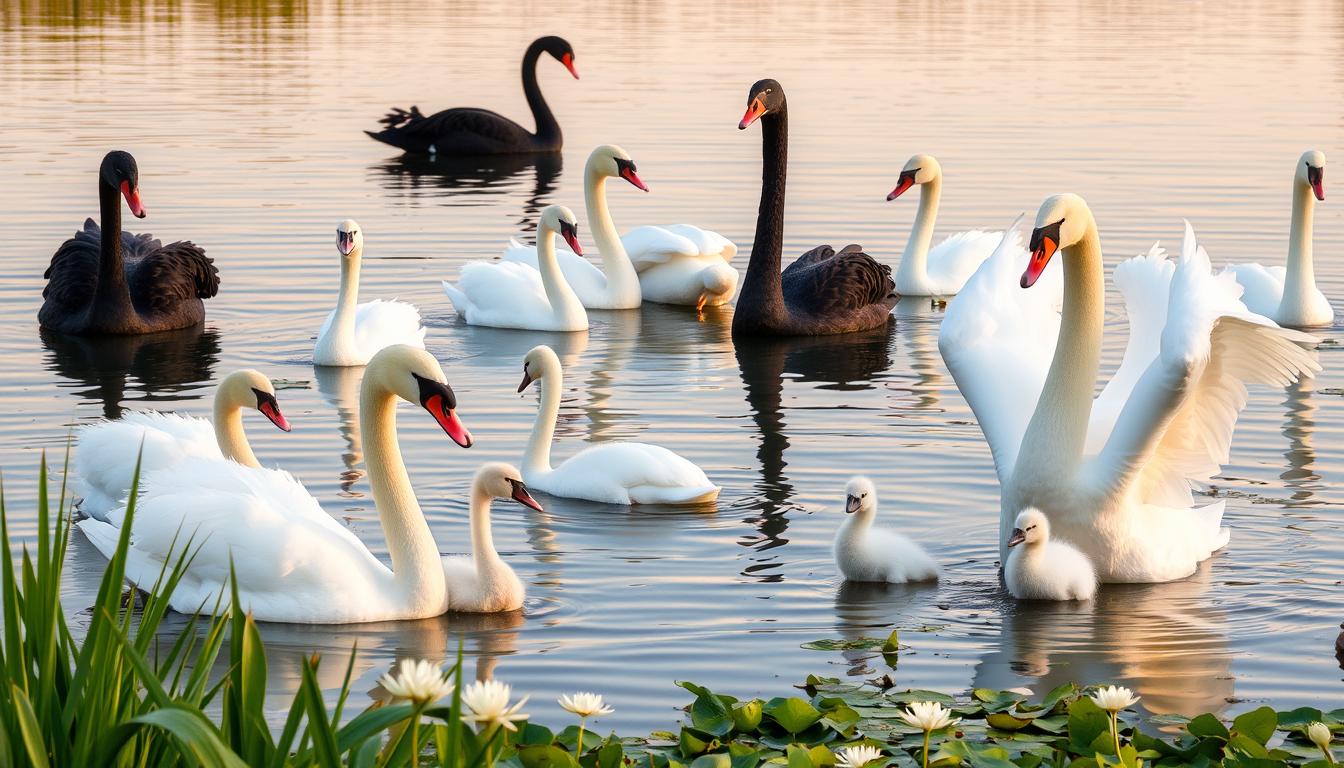How High Can a Parrot Fly? Unveiling the Mystery

Table of content:
- What Enables Parrots to Fly at High Altitudes?
- What Is the Highest Recorded Altitude a Parrot Has Flown?
- Do All Parrots Fly or Only Some Species?
- How Do Parrots Fly So High?
- Do Parrots Ever Get Altitude Sickness Like Humans?
- How Does Flying at High Altitudes Impact Parrots?
- How High Do Parrots Migrate When Flying Long Distances?
- Do Parrots Fly Higher Than Other Birds?
- What Are the Highest Flying Parrot Species?
- Do Parrots Fly Higher Than Airplanes?
- Final Thoughts
Parrots are known for their beautiful, vibrant plumage and ability to mimic human speech. But some species are also remarkable for their strong flight capabilities. Many parrots can reach great heights and speeds during flight. But just how high can a parrot fly?
What Enables Parrots to Fly at High Altitudes?
Parrots have several adaptations that allow them to fly exceptionally well:
- Lightweight, hollow bones – Like other birds, parrots have lightweight skeletons with hollow bones that minimize body weight while retaining strength. This helps parrots minimize the effort needed to get airborne and stay aloft.
- Powerful flight muscles – Parrots have strong pectoral muscles to power flapping during flight. Their wingspan relative to body size gives them a large surface area for generating lift.
- Aerodynamic body shape – A parrot’s tapered, streamlined silhouette reduces drag. Their short tails don’t create as much turbulence as the long tails of some birds.
- Efficient respiratory system – Parrots have an efficient flow-through respiratory system and hemoglobin that binds oxygen efficiently. This allows them to withstand the lower oxygen levels at higher altitudes.
These adaptations enable parrots to fly swiftly over long distances and ascend to great heights. But aerodynamics and physiology alone don’t fully explain their aerial abilities.
What Is the Highest Recorded Altitude a Parrot Has Flown?
While not definitively known, wild parrots have been spotted flying at astonishing altitudes:
- Andean Conures in South America have been seen flying over the Andes mountains at elevations up to 17,000 feet.
- Himalayan monal pheasants may migrate over the Himalayas at up to 20,000 feet.
- Flocks of wild macaws in Peru have been observed soaring at 15,000 feet altitudes.
- African grey parrots have been spotted flying above the Ngorongoro Crater in Tanzania at heights exceeding 14,000 feet.
So while not absolutely confirmed, there are credible reports of various parrot species flying at altitudes of 15,000 feet and beyond – quite impressive!
Do All Parrots Fly or Only Some Species?
Nearly all parrot species are capable of powered flight to some degree. However, some species are stronger, more agile fliers than others:
- Small parrots like budgerigars, lovebirds, and parakeets tend to be very swift, agile fliers. Their tiny size helps them quickly accelerate and maneuver.
- Large parrots like macaws and cockatoos have more wingspan and power. They may not be as nimble, but can fly swiftly over vast distances.
- Amazons, conures, and African greys are moderate, versatile fliers. They balance speed with maneuverability.
- Flightless parrot species like the kakapo and kākā exist, but are rare exceptions. Most parrots fly to some extent.
So while their flight capabilities vary by species, most parrots are adapted for flying and soar through the air with ease.
How Do Parrots Fly So High?
Parrots don’t just flap haphazardly to reach high altitudes. They utilize air currents and flight techniques that minimize effort:
- Parrots will seek out updrafts over mountain ridges and cliffs, allowing them to soar upwards while expending little energy.
- Flocking together reduces drag through aerodynamic cooperation – birds take turns at the leading edge.
- Parrots maximize lift and reduce drag by adjusting their angle of attack and curving their wings.
- Rather than flapping continuously, parrots often glide for long stretches, only flapping occasionally to gain altitude.
- Smooth, laminar airflow over their wing surface helps parrots fly efficiently at high speeds with minimal drag.
Parrots have also developed high-altitude flight patterns:
- Circling up in wide spirals allows them to gain altitude while minimizing their power output.
- Flapping hard initially, then gliding while oxygen-rich helps counter lower oxygen levels at higher altitudes.
- Flying at higher speeds generates more lift, assisting their ascent.
These methods allow parrots to reach great heights while minimizing their exertion. Their adaptations and flight behaviors allow them to fly miles above sea level.
Do Parrots Ever Get Altitude Sickness Like Humans?
Humans can experience headaches, nausea, and other effects from the lower oxygen levels at high elevation. But parrots have physiological and behavioral adaptations to cope with decreased oxygen and air pressure:
- Efficient respiratory and cardiovascular systems allow parrots to extract enough oxygen, even at 20,000 feet altitude.
- Hemoglobin in parrot blood has a higher affinity for oxygen, improving blood oxygen saturation.
- Parrots ascension techniques like circling in updrafts allow them to acclimate more gradually to elevation changes.
- If necessary, parrots can hyperventilate, increasing their oxygen intake.
- Slowing down their ascent rate gives their bodies more time to adjust to the lower oxygen.
So while altitude affects them somewhat, parrots do not suffer from altitude sickness to the degree that humans do. Their bodies are better adapted for flying at elevations far above sea level.
How Does Flying at High Altitudes Impact Parrots?
Despite their adaptations, flying at extreme altitudes does push parrots’ limits:
- Parrots’ metabolism increases to cope with the cold temperatures and thin air at high elevations. This requires extra energy expenditure.
- Their heart and respiratory rates increase to supply oxygen to metabolically active tissues.
- The low air density causes parrots to fly faster to generate enough lift. This demands greater power output.
- Soaring for long periods lets parrots rest their flight muscles and conserve energy.
- Upon descending, parrots’ metabolism and heart rate can remain elevated for a period as their body recovers.
So while parrots are well adapted for high altitude flight, it does tax their cardiovascular and respiratory systems. But alternating flapping with soaring and gliding lets them handle these demands. Their anatomy and flight abilities allow them to thrive at heights that would incapacitate most other animals.
How High Do Parrots Migrate When Flying Long Distances?
When migrating or travelling long distances, some parrots will ascend to high elevations:
- Himalayan monal pheasants fly at 20,000 feet to traverse the Himalayan mountain range during migration.
- Macaws in South America fly above 15,000 feet to pass over the Andes mountains.
- African grey parrots may fly higher than 14,000 feet to cross the Great Rift Valley in Africa.
- Flocks of budgerigars in Australia fly at 10,000 feet or higher on long journeys.
Flying at higher altitudes allows parrots to:
- Take advantage of more favorable tailwinds that ease their journey.
- Avoid trees, terrain obstacles, and inclement weather at lower elevations.
- Expend less energy flying in the thinner air at high altitudes.
- Cover more ground as their increased airspeed from the thinner air lets them fly farther.
So migrating high in the sky facilitates faster, safer, less tiring travel over immense distances for parrots.
Do Parrots Fly Higher Than Other Birds?
Parrots are impressive aviators, but they aren’t the highest flying birds:
- Many raptors like the Andean condor can soar to above 30,000 feet altitude.
- Endurance fliers like albatrosses and vultures frequently tour at 10,000 – 15,000 feet.
- Some ducks, geese, swans, cranes, and pelicans migrate at 20,000+ feet altitude.
- Bar-headed geese hold the altitude record for birds, having been tracked at over 30,000 feet near Mt Everest.
- Even many songbirds routinely migrate at 10,000 feet or higher.
Parrots may not be record-setters for absolute highest flight, but their ability to fly swiftly and capably at elevated altitudes is still extremely impressive compared to most birds.
What Are the Highest Flying Parrot Species?
Based on observations, these parrot species seem to fly at the greatest heights:
- Himalayan monal pheasants – At 20,000+ feet during migration over the Himalayan mountains.
- Andean conures – Spotted at 17,000 feet in the Andes. Excellent mountain climbers.
- Hyacinth macaws – Observed at 15,000+ feet soaring over the Amazon rainforest.
- Military macaws – Seen migrating at 15,000 feet over Peru and Bolivia.
- Grey-headed lovebirds – Migrate at 14,000 feet altitude in Africa.
All parrot species are capable of powered flight. But these parrots truly stand out for their ability to fly at extreme heights. These elite aviators demonstrate the incredible heights parrot flight can achieve.
Do Parrots Fly Higher Than Airplanes?
While parrots can fly remarkably high, planes do have an altitude advantage:
- Most powered fixed-wing aircraft can easily climb above 30,000 feet, with some over 60,000 feet. Beyond most parrots’ ceiling.
- Jet airliners cruise between 35,000 and 45,000 feet for optimal fuel efficiency and smooth air.
- High-performance fighter jets can fly in excess of 80,000 feet ceiling altitude.
- Unpressurized planes still operate comfortably to 15-20,000 feet, higher than most birds.
- Even small private prop planes normally cruise between 5000-9000 feet, higher than many migrating land birds.
So powered aircraft do have superior high-altitude flight capability versus parrots and birds in general. But the fact that parrots can ascend within striking distance of planes is remarkable for a living creature without technology!
Final Thoughts
While not the highest flying birds overall, parrots are extraordinarily skilled aerialists. Their unique adaptations allow certain parrot species to fly at altitudes of 15,000 feet and greater – impressive for birds at the limits of their physiology. Parrots demonstrate that with suitable anatomical traits, evolution’s work can produce masters of the air capable of the most gravity-defying, high-soaring flight.
Welcome. I’m Adreena Shanum, the proud owner of this website, and I am incredibly passionate about animals, especially poultry. I founded adreenapets.com as a labor of love, stemming from my desire to share my knowledge and experiences with poultry enthusiasts worldwide.




